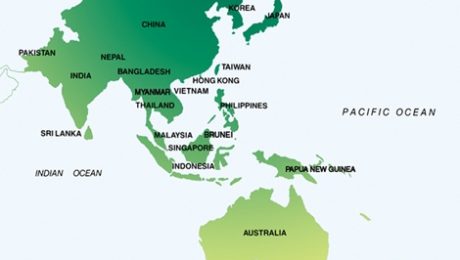Systemic Resilience and Carework: An Asia-Pacific Perspective
Below is an excerpt from a recent piece “Systemic Resilience and Carework: An Asia-Pacific Perspective” by Ito Peng, contributing researcher for the Understanding and Measuring Care group. This article was published by Migrants and Systemic Resilience: A Global COVID19 Research and Policy Hub (Mig-Res-Hub).
In this think-piece I consider how we can build a resilient systemic response to the COVID-19 pandemic and future crises. I focus on systemic resilience in relation to carework and global migration of careworkers, and I approach this from an Asia-Pacific perspective. One of the fault lines exposed by the COVID-19 is the vulnerability of the existing care, carework and migration infrastructure to exogenous shocks. Asia-Pacific is an important site to examine because it is one of the major sites of global care migration, both as sender and receiver of migrant careworkers. This think-piece draws on the research from our global partnership project based at the University of Toronto, which looks at the dynamics of careworker migration in Asia-Pacific and the interconnections between social and economic forces and policies in shaping those dynamics from both sending and receiving country perspectives. The next section briefly outlines the pandemic’s impacts on carework and care migration in Asia-Pacific. I then discuss how we might achieve systemic resilience in global care migration by first emphasizing how our care systems are interlocked with the global migration of careworkers (what I call a global care interlock), and second, how we might achieve systemic resilience. Understanding the global care interlock is an important prerequisite to systemic resilience because it allows us to see carework and migration of careworkers as a part of a larger global infrastructure or ecosystem that has been, consciously or unconsciously, built, managed and sustained by multiple actors in different parts of the globe.
Read the entire article here.
This blog was authored by Ito Peng, contributing research for the Understanding and Measuring Care research group.
- Published in Asia-Pacific, Child Care, COVID 19, Elder Care, Migrant Care Workers, Understanding and Measuring Care
What is the Care Economy and Why Should We Care?
In our project, we aim to promote and advocate for gender and socioeconomic equalities. We do this by working to reduce gender gaps in economic outcomes and by showing and properly valuing social and economic contributions of caregivers; and integrating care into macroeconomic policy making toolkits.
In this era of demographic shifts, economic change and chronic underinvestment in care provisioning, innovative policy solutions are desperately needed, now more than ever. Sustainable and inclusive development requires gender-sensitive policy tools that integrate new understandings of care work and its connections with labor market supply and economic and welfare outcomes.
The Care Work and the Economy Project, currently based at the Economics Department of American University and co-led by Maria S. Floro and Elizabeth King, includes more than 30 scholars around the globe, working closely together to provide policy makers, scholars, researchers and advocacy groups with gender-aware data, empirical evidence and analytical tools needed to promote creative macroeconomic and social policy solutions. In the next phase of the project, Care Economies in Context, we will be scaling up our project to include 8 different countries, in 4 global regions. I will be leading this next phase of the project, which will be based at the University of Toronto.
I define Care work is defined broadly as work and relationships that are necessary for the health, welfare, maintenance and protection of all people – young and old, able bodied, disabled, and frail. This definition may seem broad – but care– at its core is a very basic human need and a necessity. Whether we know it or now, we all participate in providing care work – paid or unpaid, and in receiving care every day.
By care economy, I am referring to the sector of economy that is responsible for the provision of care and services that contribute to the nurturing and reproduction of current and future populations. More specifically, it involves child care, elder care, education, healthcare, and personal social and domestic services that are provided in both paid and unpaid forms and within formal and informal sectors.
Care work is important because it is important work that sustains life. It is also important now in particular because it is one of the fastest expanding economic sectors and a major driver of employment growth and economic development around the world. For example, across the OCED, the service sector economy now accounts for over 70 percent of total employment and GDP. In lower- and middle-income countries, it is estimated to comprise nearly 60 percent of GDP. Within the service sector economy, care services is one of the fastest growing subsectors.
The International Labour Organization (ILO) estimates that the global employment in care jobs is expected to grow from 206 million to 358 million by 2030 simply based on sociodemographic changes. The figure will be even more dramatic to 475 million if governments invest resources to meet the UN sustainable development goal targets on education, health, long-term care and gender equality.
In Canada, the service sector already makes up for 75 percent of employment and 78 percent of GDP. Within this sector, healthcare, social assistance and education services are key drivers of economic and employment growth. In the U.S., healthcare is already the largest employer, larger than steel and auto industries put together. In short, our current and future economy is and will be increasing dominated by care services and care work.
However, at the same time, much of the care work continues to be performed for no pay, by families and friends, at home and in communities. This unpaid care work is not including in in our national GDP because GDP only takes into account work that is done for pay in the formal market. Therefore, if we only look at the GDP as a measure of the economy and economy growth, we miss a huge segment of the economy and economic activities. As the pandemic has shown, without both paid or unpaid care work, our economy will not be able to function effectively, nor would it be able to sustain itself.
What we are trying to do in our project is to make the care economy clearer and more visible by measuring and mapping out the size and shape of the economy, and to develop macroeconomic models that would help policymakers and civil society actors to develop better policies and better strategies to ensure more sustainable and equality inducing economic growth.
Listen to the full talk “The Care Work and the Economy Project” to learn about what the care economy is and why we should know more about it, particularly now.
The blog was authored by Ito Peng, contributing researcher for the Understanding and Measuring Care research cluster
- Published in Canada, Child Care, Economic Modeling, Elder Care, Expert Dialogues & Forums, Feminist Economics, OECD
COVID, the Old and Canada-What’s Wrong With Us? A Massey Dialogues Discussion
A recent virtual presentation from Massey College, “The Massey Dialogues: COVID, the old and Canada – What’s wrong with us?” brought together a panel to discuss how the detrimental impacts of COVID-19 in Ontario and Quebec fall alarmingly onto the elderly population. In fact, 80 per cent of pandemic deaths in Canada have occurred among the institutionalized elderly, the highest proportion in the world.
Ito Peng joins this conversation as a special guest to discuss the pandemic and its impact on Canada’s Long Term Care (LTC) sector, and ways through which the dominant thinking around market value/productivity neglects to value the work that older adults have already contributed to the economy throughout their lives, and fails to recognize their role as keepers of history and caretakers themselves.
In this discussion, Ito Peng is joined by Massey Fellows Dorothy Pringle, Husayn Marani and Michael Valpy.
- Published in COVID 19, elderly care, Expert Dialogues & Forums



